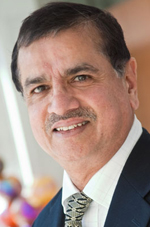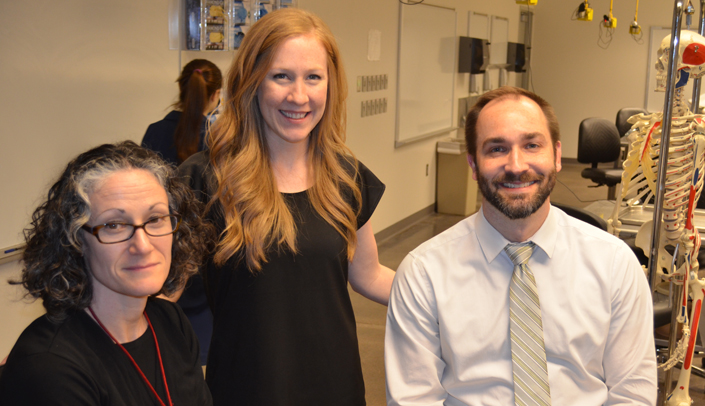When Shayla Yoachim gets her Ph.D. in genetics, cell biology & anatomy next year, she’ll join a long and distinguished list of alumni from the department.
But in another way, she’ll be one of a kind.
|
The program was revised for two reasons, said Vimla Band, Ph.D., chair of the department.
“Carol Lomneth, vice chair of education, and I have found it challenging to recruit anatomy educators in recent years, reflecting increased demand in the face of a few anatomy educators being trained.
“Also, we saw Ph.D. students such as Shayla showing passion for teaching while training in laboratory research.”
The teaching track was comprehensively designed by Shantaram Joshi, Ph.D., Gordon Todd, Ph.D., Sarah Keim, Ph.D., Ryan Splittgerber, Ph.D., and Karen Gould, Ph.D.
Yoachim is excited about the program and the opportunities it will offer her.
“I hope to get a full-time teaching faculty position at a medical school,” she said. “I’d mainly focus on teaching anatomy, but I would also be prepared to do research.
“It opens doors for both.”
 |
Shantaram Joshi, Ph.D., is the chairman of the committee that revised the Ph.D. program |
Yoachim, who describes teaching as her passion, is proud that she helped set the course for this revised track.
“I was the guinea pig for the program,” she said with a laugh. “Through working with Karen and others, we developed the teaching track. Once the bare bones had been created, I realized this was something that could potentially lead me to where I want to be career wise.”
The next student in the program, Matthew Kling from Springfield, Mo., is already enrolled and will begin in July.
The track is designed as a five- to six-year program with a teaching assistantship as well as a research dissertation. Doctoral students have both teaching and research mentors in the program — Yoachim’s are Dr. Gould (research) and Dr. Splittgerber (teaching).
“The teaching experience I’m getting through this track has shown me that I can have a positive influence on my students,” Yoachim said. “It’s something I’m good at, and something I think I’m meant to do.”
